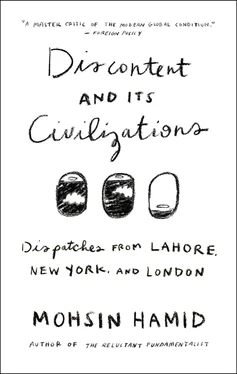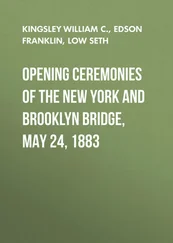At the heart of Lieven’s account of Pakistan is kinship, pervasive networks of clans and biradiris (groups of extended kin) that he identifies as “the most important force in society,” usually far stronger than any competing religious, ethnic, or political cause. Several millennia of invasions, occupations, colonizations, and rule by self-interested states resulted in a “collective solidarity for interest and defense” based on kinship becoming paramount in the area that is Pakistan. It now, as Lieven points out, “is a cultural system so strong that it can persuade a father to kill a much-loved daughter, not even for having an affair or becoming pregnant, but for marrying outside her kinship group without permission.” Moreover it is enduring, having survived, for example, “more than half a century of transplantation of Pakistani immigrants to the very different climes of Britain.” It has done much the same in the far less dislocating shift to Pakistan’s cities, sustained, as in Britain, through constant replenishment by newly migrating kin from the countryside.
The effects of kinship on Pakistani politics are profound. Most of Pakistan’s leading political parties are dynastic, including the Bhutto family’s PPP (Pakistan Peoples Party) and the Sharif family’s PML-N (Pakistan Muslim League — Nawaz); even individual members of parliament are often elected on the basis of clan alliances and support. Politics is therefore about patronage far more than ideology. Furthermore, the Pakistani state is relatively weak, collecting taxes that amount to less than 10 percent of GDP.
As a consequence, Lieven notes, Pakistani governments follow a predictable pattern. They are elected (usually as coalitions, Pakistan’s many divisions making absolute majorities exceedingly rare) on general promises of higher living standards for the population and individual promises to particular politicians, families, and districts. The governments lack the resources to keep many of these promises (which are, in any case, often conflicting); their majorities ebb away; they lose power and await another turn.
Yet because of patronage, much of what politicians extract financially from official positions circulates among their kinship groups, which cut across class. Lieven believes this system, while hugely ineffective at driving real change, helps explain “Pakistan’s remarkably low inequality rating according to the Gini Co-efficient, measuring the ratio of the income of the poorest group in society relative to the richest.” By that measure in 2002 “the figure for Pakistan was 30.6, compared with 36.8 for India, 40.8 for the US, and 43.7 for Nigeria.”
—
THE ROLE OF religion in Pakistan, a source of much hand-wringing in policy think tanks, is similarly complex. As Lieven points out, “the Islam of the Pakistani masses contains very different traditions.” Moreover, unlike in Saudi Arabia or Iran, where an oil-bankrolled state has tried to impose one monolithic version of Islam, “the Pakistani state is too weak to achieve this even if it wanted to.” Lieven describes the theological divisions among Sunnis sustained by Pakistan’s clan and kinship diversity. The Ahl-e-Hadith, heavily influenced by Wahabism, loathe saintly traditions. The Deobandis may praise saints but object to worshiping them. The Barelvis, Pakistan’s most numerous (and “fissiparous”) school, tend to embrace the intercession of saints with God. Veneration of saints is also central to Pakistan’s Shias. Because saintliness can be inherited, the heads of Pakistan’s powerful landowning “pir [saint] families remain of immense political importance.” They can actively create bridges among religious groups and they serve as major bosses in several mainstream political parties, especially the “secular” PPP.
Religiosity thus fuses with kinship networks and politics to reinforce Pakistan’s existing elite. But it also helps marginalize Pakistan’s Islamist parties, drawn primarily from the Ahl-e-Hadith and Deobandi schools, which struggle to capture more than a few percent of the country’s vote. (Away from politics and “hardly noticed outside the country,” Lieven believes Pakistan’s religiosity also softens “the misery of Pakistan’s poor” by contributing to an astounding level of charitable donation, which, “at almost 5 percent of GDP, is one of the highest rates in the world.”)
Throughout his analysis, Lieven rejects the notion that Pakistan fits somehow in a category apart from the rest of the South Asian subcontinent, a sui generis nuclear-armed “failed state” on the verge of collapse. Rather, he writes, “Pakistan is in fact a great deal more like India — or India like Pakistan — than either country would wish to admit. If Pakistan were an Indian state, then in terms of development, order, and per capita income it would find itself somewhere in the middle, considerably below Karnataka but considerably above Bihar.”
Indeed, even in the violent challenges confronting its state authority, Pakistan is like its subcontinental neighbors: “All of the states of this region have faced insurgencies over the past generation,” Lieven notes, and by comparison to the Taliban conflict in Pakistan, Sri Lanka’s Tamil rebellion “caused proportionally far more casualties” and India’s Naxalite Maoist insurgency controls “a far greater proportion of India.”
Lieven has evident sympathy for the Pakistani military (indeed there are points when, in referring to a uniformed ancestor who served during British rule in what is now Pakistan, one suspects Lieven may have his own feelings of kinship with the Pakistan army). But he is clear about the role the army has played in fomenting militancy, and about the deadly threat militants now pose to Pakistan, especially the potential for far worse bloodshed if the remaining militant groups that have not yet turned on the military and are therefore being kept “in existence ‘on the shelf’”—including Pashtun militants focused on Afghanistan and Punjabi militants focused on India — were to do so.
Still, despite the ineffectiveness of much of the Pakistani state, he believes Pakistan’s kinship groups and its stabilizing and antireformist social structures give the country a combination of diversity and toughness that makes successful revolution highly unlikely. He also writes that the Pakistani army, as it demonstrated in the “brutal but in the end brutally effective” operation to liberate Swat from militant control in 2009, is fully capable of routing guerrillas who seize territory when it sets its mind to doing so.
A key question, therefore, is whether the army itself could split. Lieven thinks not (and we must fervently hope that he is right). The army, he explains, is an all-volunteer institution with a strong shared ethos, nationalistic rather than pan-Islamic in outlook, and increasingly vigilant against Taliban sympathizers within—“after all, we are not suicidal idiots,” an officer tells him. The real risk, which Lieven argues must be avoided at all costs, is of “open intervention of US ground forces” in Pakistan. For if ordered by their commanders not to resist, “parts of the Pakistani army would mutiny in order to fight the invaders,” and in such an eventuality “Islamist upheaval and the collapse of the state would indeed be all too likely.”
In passages such as this, Lieven comes close to describing Pakistan as if through a gunsight; but the gunsight belongs to an American decision maker on the hunt, with Lieven playing the role of preservationist guide. The best Western strategy, he counsels, would “stem from a recognition that Pakistan’s goals in Afghanistan are in part legitimate — even if the means with which they have been sought have not been”—and would “seek a peaceful solution to the Kashmir dispute, despite all the immense obstacles in both India and Pakistan.” For in the end, “not even the greatest imaginable benefits of US — Indian friendship could compensate for the actual collapse of Pakistan, with all the frightful dangers this would create not just for the West but for India too.”
Читать дальше












